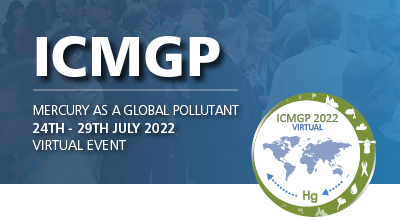| Abstract Title: | Influence of thawing permafrost on the fate of Hg and trace metals in thermokarst ponds, eastern Canadian subarctic region (Nunavik) |
| Presenter Name: | Martin Pilote |
| Company/Institution: | Environnement and Climate Canada |
| Session: | Mercury in Polar Ecosystems |
| Day and Session: | Tuesday 26th July - Session Two |
| Start Time: | 10:00 UTC |
| Co-Authors: | Martin Pilote,JOÃO Canário,Patrice Turcotte,Christian Gagnon,Daniel Houle |
Abstract Information :
Recent findings suggested that a globally significant amount of carbon (C) and mercury (Hg) might be contained in permafrost and estimated at about 800 Gg of Hg in the Northern Hemisphere. Thawing permafrost has the potential to release a large proportion of historically stored C, Hg and trace metals that could alter biogeochemical processes and increase the export of contaminants to freshwater ecosystems. Changes in redox conditions in thaw lakes may consequently enhance the production of higher toxic chemical species such as methylmercury (MeHg). The main objective of this study is to evaluate the fate of Hg and trace metals in thermokarst ponds, to compare the biogeochemical processes involved between seasons, and to assess the potential transport towards the aquatic ecosystem. More specifically, the study compared the influence of thawing permafrost in subarctic sporadic permafrost (thaw lakes formed by the collapsed of peat mounds / palsas) and discontinuous permafrost (circular or crest thaw lakes formed by the collapse of frozen silt-clay mounds / lithalsas). The palsa sites showed higher dissolved organic carbon (DOC) and Hg, while lithalsa sites showed higher variability. The Hg and trace metals, as well as biogeochemical processes varied between sites and seasons, showing a strong relationship with oxygen level, organic matter and the geomorphology of the surrounding landscape. While Hg export occurred potentially and predominantly by diffusion in palsas and by land subsidence in lithalsas area. Quantifying Hg and trace metals originating from perennial frozen soil and thawing permafrost that can cause a potential risk to native communities in polar regions is crucial of interest for the scientific community and policy makers.



